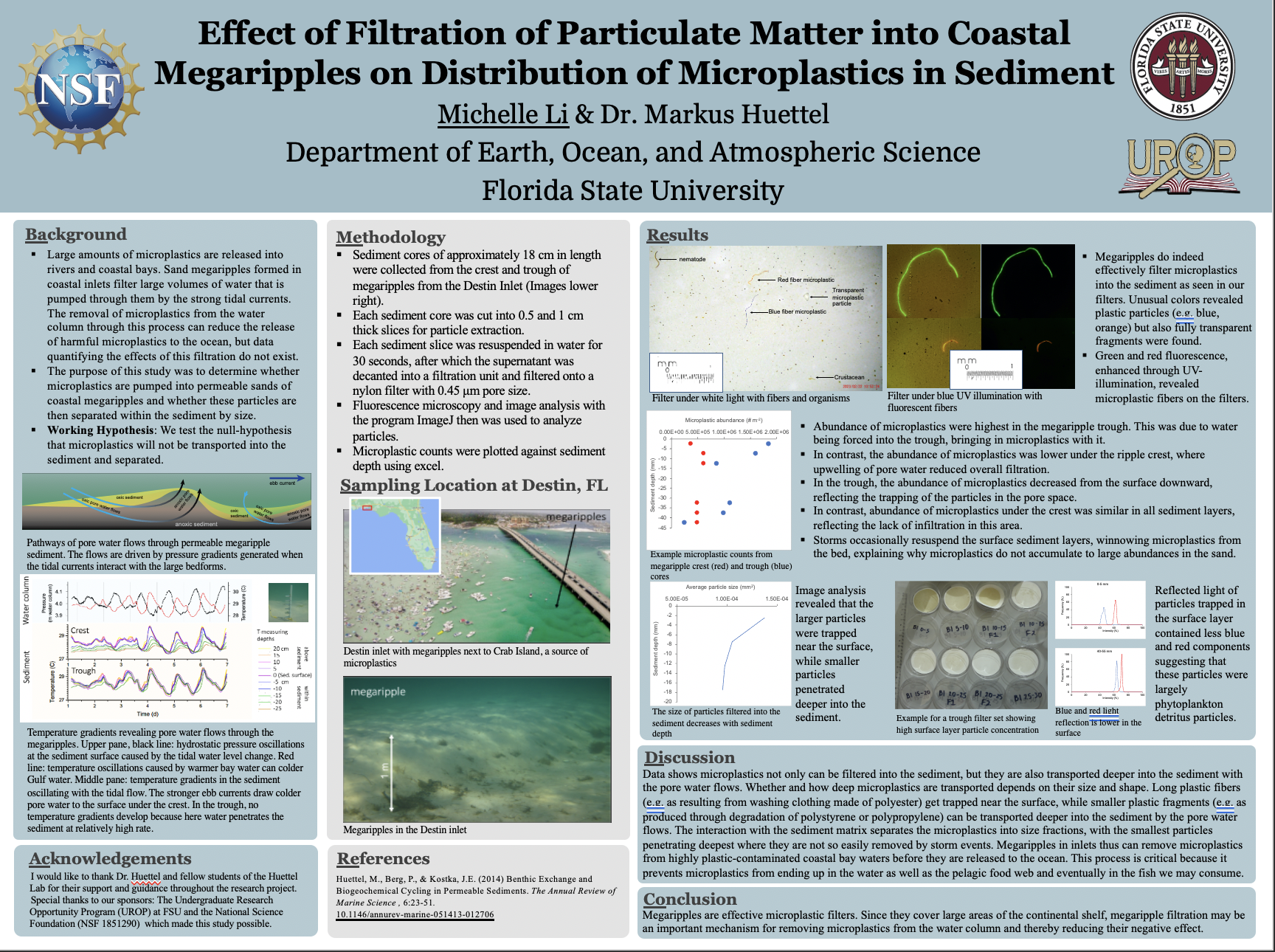Research Symposium
23rd annual Undergraduate Research Symposium, April 6, 2023
Michelle Li Poster Session 2: 1:30 pm - 2:30 pm/ Poster #295

BIO
My name is Michelle Li and I am a 2nd-year student majoring in Biological Sciences on a Pre-Dental Track. Some research interests of mine include topics in Oceangeography, specifically mechanisms behind particulate matter filtration within marine environments. We can use findings from these studies to provide local government officials and agencies with information to mitigate the negative effects of pollutants such as microplastics in the waters as well as keep them out of the pelagic food web which affects marine wildlife such as fish, which we may eventually consume as well.
Effect of Filtration of Particulate Matter into Coastal Megaripples on Distribution of Microplastics in Sediment
Authors: Michelle Li, Markus HuettelStudent Major: Biological Sciences
Mentor: Markus Huettel
Mentor's Department: Earth, Ocean, and Atmospheric Science Mentor's College: College of Arts and Sciences Co-Presenters:
Abstract
Sand megaripples that form in coastal inlets filter large volumes of water that is pumped through them by the strong tidal currents. The removal of particulate matter from the water column through this process can affect carbon and contaminant cycles, but data quantifying the effects of this filtration do not exist. The purpose of this study was to determine how matter that is pumped through the permeable sands of coastal megaripples is separated and trapped in the different layers of the sediment with a focus on microplastics. Sediment cores of approximately 18 cm in length were taken from the crest and trough of megaripples in Destin Inlet. Each sediment core was cut into 0.5 cm (0 – 50 cm) and 1 cm (50 – 90 cm) thick slices for analysis. Particles were separated from the sand through resuspension and subsequent filtration onto 0.45-micron Nylon miIIipore filter.s The particles on the filters were photographed under UV light which revealed microplastic particles through their fluorescence. The images were evaluated for microplastic abundance, type (fiber, fragment, pellet), and their size ranges across sediment layers. Plotting this microplastic information against sediment depth revealed correlations between microplastic distribution and penetration depth in megaripple crest and trough sands. Inspection of the filters revealed the highest particle concentrations in the upper layer (0-15 cm) of the trough sediment, followed by the crest sediments. Average particle size followed that trend as well, displaying a decrease in size as depth increased.
Keywords: Pollution, Oceanogeography, Filtration


